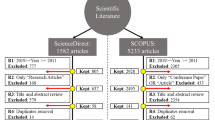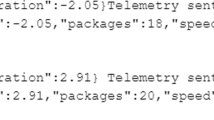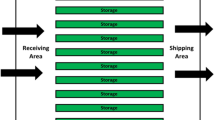Abstract
Cyber-Physical System (CPS) is one of the most promising directions of Industry 4.0 smart manufacturing. Abundant manufacturing data and information are available for decision-makers in real-time thanks to the application of various frontier technologies in CPS. However, the inherent complexity and uncertainty of manufacturing optimization still plague scholars and practitioners and impede further progress of smart manufacturing. The production planning and scheduling is such a complex and stochastic problem that has received considerable research attention. Whereas how to leverage the strengths of CPS for breaking the bottleneck of complexity and uncertainty, is still a question that needs further exploration. This paper proposes a novel “divide and conquer” approach, Spatial–Temporal Out-Of-Order execution (ST-OOO), for achieving real-time planning and scheduling in cyber-physical factories. ST-OOO divides the space and time scopes of a factory into finite areas and intervals to reduce complexity and localize uncertainties so that the original complex optimization problem is decomposed into a set of subproblems with different spatial and temporal characteristics. These small-size subproblems can be assembled using data and information visibility and traceability, and then solved in a rolling spatiotemporal manner to generate a global solution. A case study shows that ST-OOO has a well-balanced and more stable performance compared to traditional strategies. Sensitivity analysis is carried out to study the impacts of spatial and temporal scales on the results.







Similar content being viewed by others
Data availability
The data will not be deposited.
Code availability
MATLAB R2019a with custom code.
References
Balakrishnan, J., & Cheng, C. H. (2007). Multi-period planning and uncertainty issues in cellular manufacturing: A review and future directions. European Journal of Operational Research, 177(1), 281–309.
Bitran, G. R., Haas, E. A., & Hax, A. C. (1982). Hierarchical production planning: A two-stage system. Operations Research, 30(2), 232–251.
Brah, S. A., & Hunsucker, J. L. (1991). Branch and bound algorithm for the flow shop with multiple processors. European Journal of Operational Research, 51(1), 88–99.
Brah, S. A., & Wheeler, G. E. (1998). Comparison of scheduling rules in a flow shop with multiple processors: A simulation. Simulation, 71(5), 302–311.
Chen, J., Wang, M., Kong, X. T., Huang, G. Q., Dai, Q., & Shi, G. (2019). Manufacturing synchronization in a hybrid flowshop with dynamic order arrivals. Journal of Intelligent Manufacturing, 30(7), 2659–2668.
Dempster, M. A. H., Fisher, M., Jansen, L., Lageweg, B., Lenstra, J. K., & Rinnooy Kan, A. (1981). Analytical evaluation of hierarchical planning systems. Operations Research, 29(4), 707–716.
Efthymiou, K., Mourtzis, D., Pagoropoulos, A., Papakostas, N., & Chryssolouris, G. (2016). Manufacturing systems complexity analysis methods review. International Journal of Computer Integrated Manufacturing, 29(9), 1025–1044.
Fang, W., & Zheng, L. (2020). Shop floor data-driven spatial–temporal verification for manual assembly planning. Journal of Intelligent Manufacturing, 31(4), 1003–1018.
Guo, D., Zhong, R. Y., Lin, P., Lyu, Z., Rong, Y., & Huang, G. Q. (2020). Digital twin-enabled graduation intelligent manufacturing system for fixed-position assembly islands. Robotics and Computer-Integrated Manufacturing, 63, 101917.
Hax, A. C., & Meal, H. C. (1973). Hierarchical integration of production planning and scheduling. Sloan School of Management: Massachusetts Institute of Technology.
Keller, B., & Bayraksan, G. (2009). Scheduling jobs sharing multiple resources under uncertainty: A stochastic programming approach. IIE Transactions, 42(1), 16–30.
Kia, H., Davoudpour, H., & Zandieh, M. (2010). Scheduling a dynamic flexible flow line with sequence-dependent setup times: a simulation analysis. International Journal of Production Research, 48(14), 4019–4042.
Komaki, G., Teymourian, E., & Kayvanfar, V. (2016). Minimising makespan in the two-stage assembly hybrid flow shop scheduling problem using artificial immune systems. International Journal of Production Research, 54(4), 963–983.
Kong, X. T., Luo, H., Huang, G. Q., & Yang, X. (2019). Industrial wearable system: The human-centric empowering technology in Industry 4.0. Journal of Intelligent Manufacturing, 30(8), 2853–2869.
Kurz, M. E., & Askin, R. G. (2004). Scheduling flexible flow lines with sequence-dependent setup times. European Journal of Operational Research, 159(1), 66–82.
Kusiak, A. (2017). Smart manufacturing must embrace big data. Nature, 544(7648), 23–25.
Li, Z., & Ierapetritou, M. G. (2010). Rolling horizon based planning and scheduling integration with production capacity consideration. Chemical Engineering Science, 65(22), 5887–5900.
Li, M., Xu, G., Lin, P., & Huang, G. Q. (2019). Cloud-based mobile gateway operation system for industrial wearables. Robotics and Computer-Integrated Manufacturing, 58, 43–54.
Li, M., Jiang, M., Lyu, Z., Chen, Q., Wu, H., & Huang, G. Q. (2020). Spatial-temporal finite element analytics for cyber-physical system-enabled smart factory: Application in hybrid flow shop. Procedia Manufacturing, 51, 1229–1236.
Lin, P., Li, M., Kong, X., Chen, J., Huang, G. Q., & Wang, M. (2018a). Synchronisation for smart factory-towards IoT-enabled mechanisms. International Journal of Computer Integrated Manufacturing, 31(7), 624–635.
Lin, P., Shen, L., Zhao, Z., & Huang, G. Q. (2018b). Graduation manufacturing system: synchronization with IoT-enabled smart tickets. Journal of Intelligent Manufacturing, 30, 2885.
Liu, Y., & Karimi, I. (2008). Scheduling multistage batch plants with parallel units and no interstage storage. Computers Chemical Engineering, 32(4–5), 671–693.
Luo, H., Yang, X., & Wang, K. (2019). Synchronized scheduling of make to order plant and cross-docking warehouse. Computers & Industrial Engineering, 138, 106108.
Menezes, G. C., Mateus, G. R., & Ravetti, M. G. (2016). A hierarchical approach to solve a production planning and scheduling problem in bulk cargo terminal. Computers & Industrial Engineering, 97, 1–14.
O’Reilly, S., Kumar, A., & Adam, F. (2015). The role of hierarchical production planning in food manufacturing SMEs. International Journal of Operations & Production Management, 35(10), 1362–1385.
Oztemel, E., & Gursev, S. (2020). Literature review of Industry 4.0 and related technologies. Journal of Intelligent Manufacturing, 31(1), 127–182.
Qin, W., Zhang, J., & Song, D. (2018). An improved ant colony algorithm for dynamic hybrid flow shop scheduling with uncertain processing time. Journal of Intelligent Manufacturing, 29(4), 891–904.
Rahmani, D., & Ramezanian, R. (2016). A stable reactive approach in dynamic flexible flow shop scheduling with unexpected disruptions: A case study. Computers & Industrial Engineering, 98, 360–372.
Ruiz, R., & Vázquez-Rodríguez, J. A. (2010). The hybrid flow shop scheduling problem. European Journal of Operational Research, 205(1), 1–18.
Sisinni, E., Saifullah, A., Han, S., Jennehag, U., & Gidlund, M. (2018). Industrial internet of things: Challenges, opportunities, and directions. IEEE Transactions on Industrial Informatics, 14(11), 4724–4734.
Sridharan, V., Berry, W. L., & Udayabhanu, V. (1987). Freezing the master production schedule under rolling planning horizons. Management Science, 33(9), 1137–1149.
Tao, F., Cheng, J., & Qi, Q. (2017). IIHub: An industrial Internet-of-Things hub toward smart manufacturing based on cyber-physical system. IEEE Transactions on Industrial Informatics, 14(5), 2271–2280.
Torkaman, S., Ghomi, S. F., & Karimi, B. (2017). Multi-stage multi-product multi-period production planning with sequence-dependent setups in closed-loop supply chain. Computers & Industrial Engineering, 113, 602–613.
Udoka, S. J. (1991). Automated data capture techniques: A prerequisite for effective integrated manufacturing systems. Computers & Industrial Engineering, 21(1–4), 217–221.
Vandevelde, A., Hoogeveen, H., Hurkens, C., & Lenstra, J. K. (2005). Lower bounds for the head-body-tail problem on parallel machines: A computational study of the multiprocessor flow shop. INFORMS Journal on Computing, 17(3), 305–320.
Wang, L., & Haghighi, A. (2016). Combined strength of holons, agents and function blocks in cyber-physical systems. Journal of Manufacturing Systems, 40, 25–34.
Wang, S., & Liu, M. (2013). A heuristic method for two-stage hybrid flow shop with dedicated machines. Computers & Operations Research, 40(1), 438–450.
Weng, W., Wei, X., & Fujimura, S. (2012). Dynamic routing strategies for JIT production in hybrid flow shops. Computers & Operations Research, 39(12), 3316–3324.
Wittrock, R. J. (1988). An adaptable scheduling algorithm for flexible flow lines. Operations Research, 36(3), 445–453.
Yang, H., Kumara, S., Bukkapatnam, S. T., & Tsung, F. (2019). The internet of things for smart manufacturing: A review. IISE Transactions, 51, 1190.
Zhong, R. Y., Dai, Q., Qu, T., Hu, G., & Huang, G. Q. (2013). RFID-enabled real-time manufacturing execution system for mass-customization production. Robotics and Computer-Integrated Manufacturing, 29(2), 283–292.
Zhong, R. Y., Xu, X., Klotz, E., & Newman, S. T. (2017). Intelligent manufacturing in the context of industry 4.0: A review. Engineering, 3(5), 616–630.
Zienkiewicz, O. C., Taylor, R. L., & Zhu, J. (2013). The finite element method: Its basis and fundamentals. Amsterdam: Elsevier.
Funding
The authors would like to acknowledge partial financial supports from funding sources, including HKSAR RGC GRF Project (17203518), the 2019 Guangdong Special Support Talent Program – Innovation and Entrepreneurship Leading Team (China) (2019BT02S593), and 2018 Guangzhou Leading Innovation Team Program (201909010006).
Author information
Authors and Affiliations
Contributions
ML: Conceptualization, Methodology, Formal analysis and investigation, Writing - original draft preparation. RYZ: Conceptualization, Writing - review and editing TQ: Conceptualization, Writing - review and editing. GQH: Conceptualization, Methodology, Supervision, Resources, Funding acquisition.
Corresponding author
Ethics declarations
Conflict of interest
The authors declare that this manuscript is original, has not been published before and is not currently being considered for publication elsewhere. There are no known conflicts of interest associated with this publication and there has been no significant financial support for this work that could have influenced its outcome. We confirm that the manuscript has been read and approved by all named authors and that there are no other persons who satisfied the criteria for authorship but are not listed. We further confirm that the order of authors listed in the manuscript has been approved by all of us. We understand that the Corresponding Author is the sole contact for the Editorial process (including Editorial Manager and direct communications with the office). He is responsible for communicating with the other authors about progress, submissions of revisions and final approval of proofs. We confirm that we have provided a current, correct email address (gqhuang@hku.hk) which is accessible by the Corresponding Author and which has been configured to accept emails from the editorial office.
Additional information
Publisher's Note
Springer Nature remains neutral with regard to jurisdictional claims in published maps and institutional affiliations.
Rights and permissions
About this article
Cite this article
Li, M., Zhong, R.Y., Qu, T. et al. Spatial–temporal out-of-order execution for advanced planning and scheduling in cyber-physical factories. J Intell Manuf 33, 1355–1372 (2022). https://doi.org/10.1007/s10845-020-01727-2
Received:
Accepted:
Published:
Issue Date:
DOI: https://doi.org/10.1007/s10845-020-01727-2




